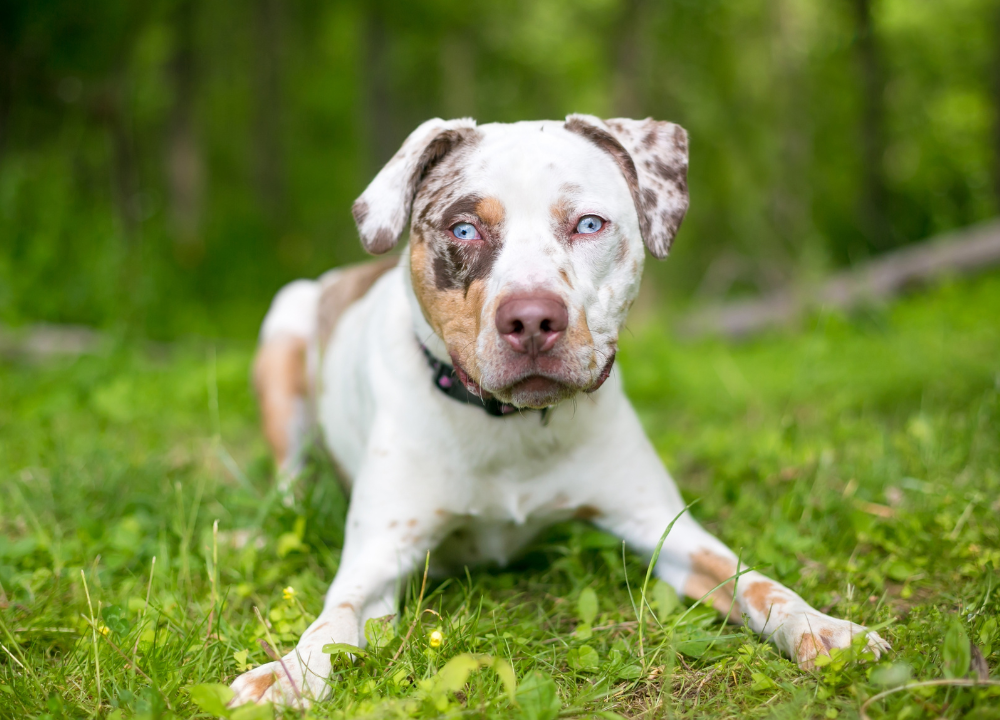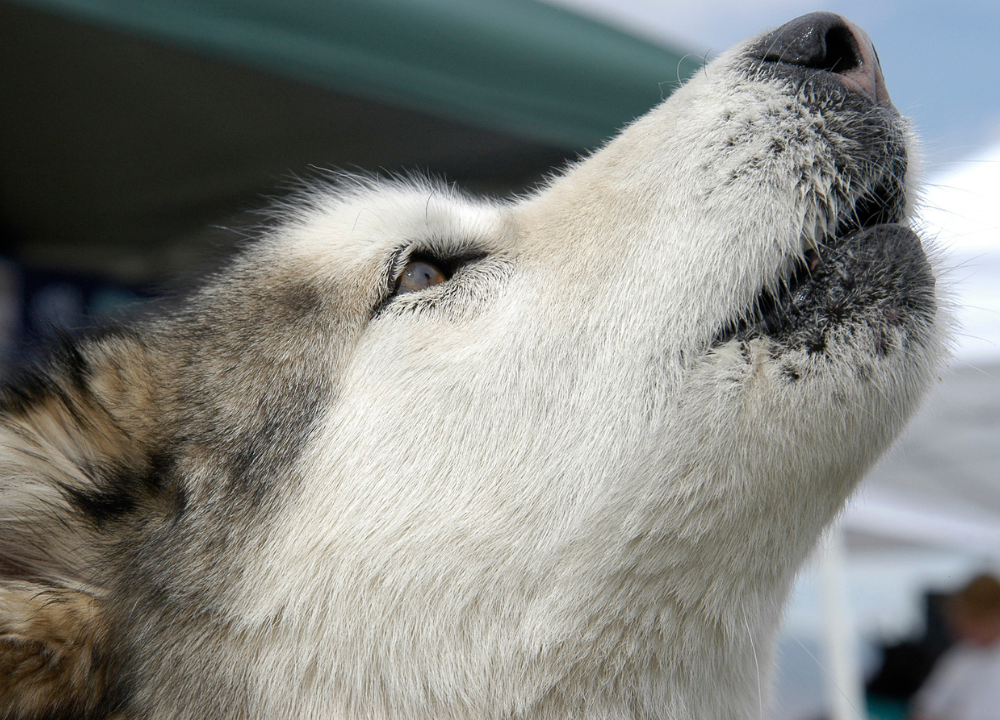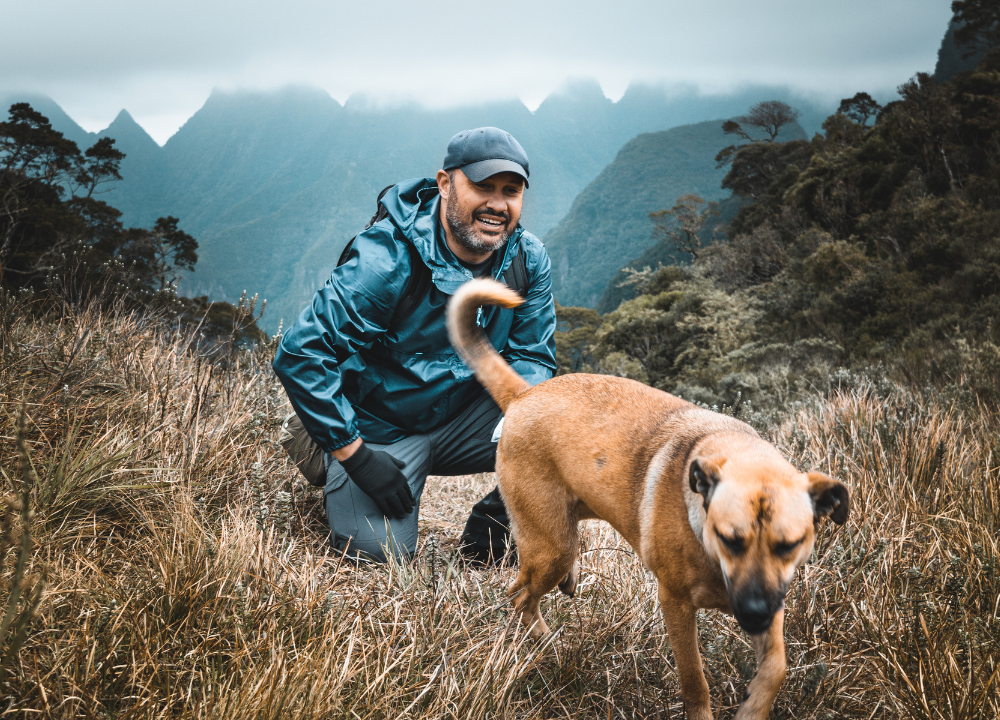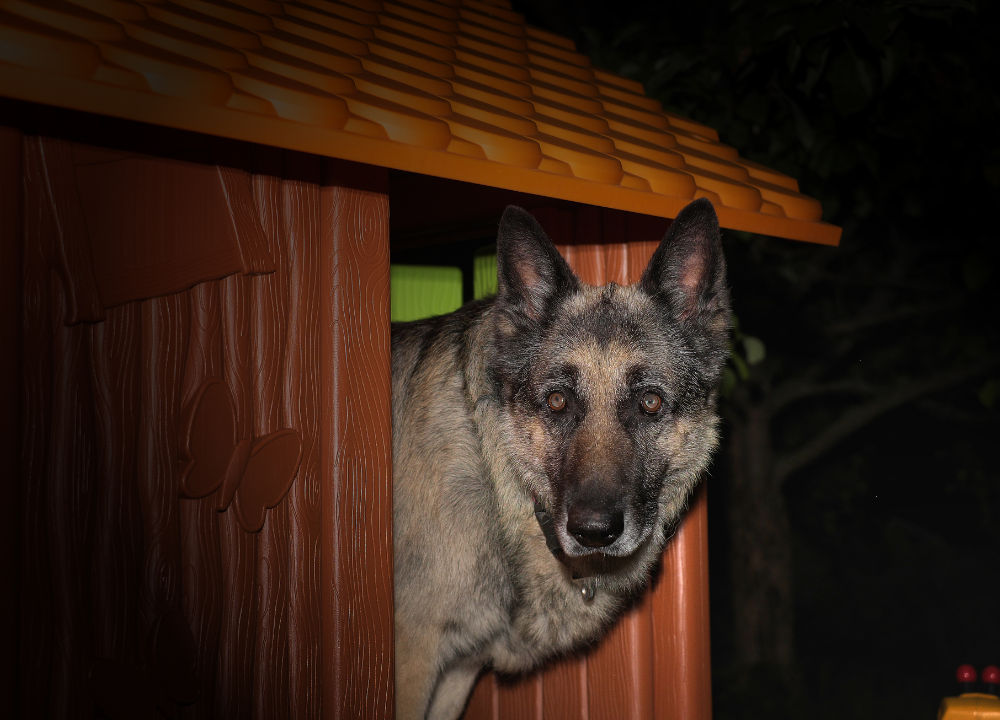One myth about Pitahoula dogs is that they are aggressive by nature, while a fact is they are often loyal and protective. Contrary to belief, they don’t inherently dislike other animals; proper socialization is key.
The Pitahoula, a lesser-known breed, intrigues dog enthusiasts with its unique blend of characteristics and mysterious origins. These dogs are a mix between the American Pit Bull Terrier and the Louisiana Catahoula Leopard Dog, resulting in a strong, energetic, and intelligent canine.
Table of Contents
Origin And History Pitahoula Dog
The Pitahoula dog is a fascinating breed, shrouded in mystery and intrigue. This post will peel back the layers of myths and shine a light on the origin and history of this lesser-known canine. Let’s dive into the captivating tale of the Pitahoula, exploring its roots and how it has evolved over time.
Origin Of The Pitahoula Dog
The Pitahoula dog’s origin story is as unique as its name. It is believed to be a mix between the Pitbull and the Louisiana Catahoula Leopard Dog. This blend created a powerful, loyal, and intelligent breed. The exact timeline of the Pitahoula’s creation is unclear, but it likely occurred in the United States, where both parent breeds were popular.
- Pitbulls were known for their strength and bravery.
- Louisiana Catahoula Leopard Dogs were famous for their hunting skills.
The combination of these traits made the Pitahoula an exceptional working and companion dog. Initially bred for hunting and farm work, they quickly found a place in families’ hearts.
Evolution Of The Pitahoula Breed
Since its inception, the Pitahoula breed has gone through significant changes. Breeders focused on enhancing certain qualities to suit various needs and environments. The breed’s evolution is marked by its increasing popularity among dog lovers who value both physical ability and emotional intelligence.
| Year | Focus of Evolution |
|---|---|
| Early Years | Hunting and Farm Work |
| Mid 20th Century | Family Companionship |
| 21st Century | Service and Therapy Roles |
The Pitahoula’s adaptability has allowed it to thrive in various roles, from loyal protectors to gentle therapy dogs. This breed’s journey from a working dog to a beloved family member highlights its versatility and enduring appeal.
Myths: Leopard Bloodline
The Pitahoula dog, a remarkable blend of strength and agility, often carries a shroud of mystery around its origins. Among the most intriguing aspects are the myths surrounding its leopard bloodline.
Misleading Name
One common myth about the Pitahoula revolves around its name, suggesting a direct lineage to leopards. Contrary to popular belief, the “leopard” in their name does not mean these dogs have wild cat ancestors. The term actually refers to their distinctive coat pattern that resembles the spotted fur of a leopard. The Pitahoula, more formally known as the Louisiana Catahoula Leopard Dog, is indeed a product of careful breeding among domestic dogs. Let’s dissect this myth with some clear facts:
- The breed’s ancestry includes Native American dogs, Greyhounds, and Mastiffs.
- No evidence supports a direct genetic link to leopards or other wild cats.
- The name ‘Catahoula’ is of Native American origin, meaning ‘sacred lake.’
It’s crucial to understand that breed names can often be figurative rather than literal. The Pitahoula’s moniker is a testament to its striking appearance, not its genetic makeup.
Coat Pattern Variation
The Pitahoula dog’s coat is a dazzling array of patterns and colors, which often leads to misconceptions. The ‘leopard’ descriptor in their name highlights a specific coat pattern, but not all Pitahoulas carry this trait. The coat variations are numerous, and they include:
- Solid
- Brindle
- Patchwork
- Leopard (spotted)
This diversity stems from the breed’s complex genetic heritage, which allows for a wide range of appearances. The table below outlines the possible coat patterns and their associated traits:
| Coat Pattern | Description | Common Colors |
|---|---|---|
| Leopard | Spotted pattern resembling a leopard’s coat | Blue, red, black, gray |
| Brindle | Stripes giving a tiger-stripe effect | Brown, tan, red |
| Solid | Single color throughout | White, black, brown |
| Patchwork | Large patches of different colors | Any combination |
The myth that all Pitahoulas have ‘leopard’ coats is simply not true. Understanding this breed’s coat patterns enriches the appreciation for their unique beauty and dispels any misconceptions about their appearance.
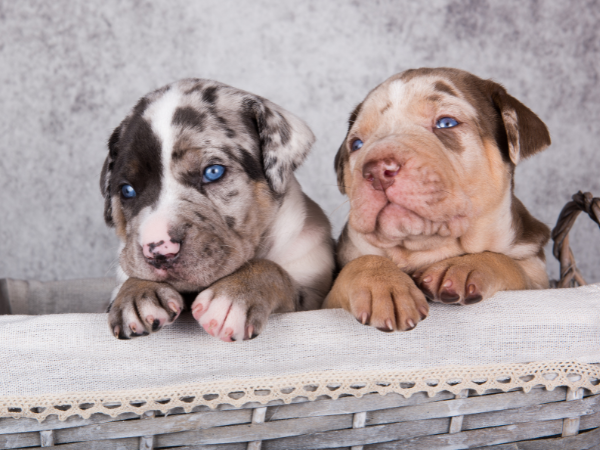
Facts: Herding Abilities
The Pitahoula dog, a blend of courage and intelligence, often remains a mystery to many. Beyond their striking appearance lies a lesser-known fact: they are adept herders. Their innate herding abilities make them not just loyal companions, but also hardworking helpers on the farm. Let’s debunk some myths and shine a spotlight on the genuine talents of these remarkable dogs.
Exceptional Herding Skills
Pitahoula dogs exhibit remarkable herding skills that often go unnoticed. Born with an instinct to guide and move livestock, these dogs work with precision and dedication. Their skills include:
- Speed: Pitahoulas can move quickly around the herd, ensuring no animal strays from the group.
- Agility: Their nimble movements allow them to navigate through obstacles with ease.
- Stamina: They possess the endurance to work long hours without tiring.
The table below highlights key aspects of their herding technique:
| Technique | Description |
|---|---|
| Eye | Using intense gaze to control livestock movement |
| Bark | Employing barks to command and direct animals |
| Nip | Gently nipping at heels to keep livestock in line |
With consistent training, their exceptional herding skills flourish, turning them into valuable farmhands.
Natural Leadership
The Pitahoula’s natural leadership shines when they are among other animals. This leadership is not about dominance but about guiding with confidence and assertiveness. Traits that define their leadership include:
- Confidence: They approach tasks with certainty and calmness.
- Decision-making: Pitahoulas make quick, effective decisions in the field.
- Communication: They use body language and vocal cues to communicate with livestock and humans alike.
These dogs don’t just work solo; they excel in teamwork. They often take the lead when paired with other herding dogs, showing them the ropes. Their ability to assess situations and act accordingly makes them standout leaders. Whether it’s a chaotic flock or a stubborn cattle group, Pitahoulas manage with finesse and control.
In essence, their leadership is about partnership and respect. They earn the trust of the herd and the admiration of their human handlers. With a Pitahoula in charge, harmony on the farm is not just a goal; it’s a given.
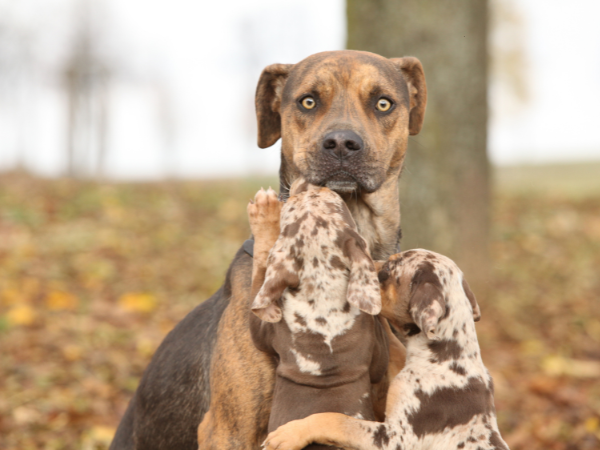
Myth: Pitahoula Dogs Are Difficult To Train
Among the many myths surrounding the Pitahoula dog, one stands out: they are tough to train. This notion might stem from their strong-willed nature and high energy levels. Yet, it’s a misconception that does not match the reality faced by many Pitahoula owners. These dogs, a mix between the Louisiana Catahoula Leopard Dog and the American Pit Bull Terrier, are intelligent and capable learners.
Challenges In Training
Training a Pitahoula can seem daunting due to certain challenges:
- Stubbornness: They can be willful, making consistent training a must.
- Energy Levels: Pitahoulas are energetic and need lots of exercise.
- Intelligence: Their smarts mean they can get bored with repetition.
Beyond these points, consider the following table illustrating common training difficulties:
| Challenge | Details | Solutions |
|---|---|---|
| Socialization | Need for early interaction with people and pets. | Regular playdates and walks in public spaces. |
| Consistency | Training must be consistent to be effective. | Set a routine and stick to it. |
| Authority | They respect an assertive, calm leader. | Be firm and patient, showing who’s in charge. |
Effective Training Techniques
To train a Pitahoula effectively, use these techniques:
- Positive Reinforcement: Reward good behavior with treats and praise.
- Clicker Training: Use a clicker for immediate feedback.
- Exercise: Start with a good run to burn off excess energy.
Each method plays a crucial role in shaping behavior:
- Positive reinforcement builds trust and enthusiasm for learning.
- Clicker training offers clear, consistent cues for desired actions.
- Enough exercise ensures they are focused during training sessions.
Fact: Pitahoula Dogs Are Great Family Pets
Beneath the surface of myths, one fact stands out: Pitahoula dogs are great family pets. These canines are a unique mix, often resulting from the crossing of Pitbulls and Catahoula Leopard Dogs. This blend gives the Pitahoula a set of traits that make them ideal companions for home life. They are loyal, affectionate, and have a strong sense of family.
Natural Instincts As Protectors
The Pitahoula inherits a natural instinct to guard and protect, making them excellent watchdogs for families. These dogs are not aggressive without cause. Their protective nature stems from a deep bond with their owners. Here’s what sets them apart as protectors:
- Alertness: Pitahoulas are always aware of their surroundings. They quickly notice when something is amiss.
- Loyalty: Their loyalty to their family is unwavering. They will stand by your side through thick and thin.
- Discernment: These dogs can sense the difference between a benign visitor and a true threat, reducing the risk of false alarms.
Pitahoulas often display protective behavior in a calm, controlled manner. They may position themselves between their owner and a stranger or bark to alert their family of someone’s approach. Their size and confident presence alone can be a deterrent to would-be intruders. Proper training and socialization from a young age ensure that their protective instincts are well-managed.
Compatibility With Children And Other Pets
Pitahoula dogs are not just protective; they are also known for their compatibility with children and other pets. Their gentle and patient nature makes them a great fit for homes with kids. Here’s what makes Pitahoulas great playmates for children:
- Patience: Pitahoulas typically have a high tolerance for the playful antics of children.
- Gentleness: Despite their size and strength, they are usually gentle with family members of all ages.
- Energy: They have the energy to keep up with active children, making them excellent companions for playtime.
When it comes to other pets, early socialization is key. Pitahoulas can live harmoniously with other animals, especially if they grow up together. Introducing pets gradually and under controlled circumstances helps foster a peaceful coexistence. Consistent training and reinforcement of positive behavior are vital for maintaining a happy, multi-pet household.

Myths: Originating From Catahoula Parish
The Pitahoula dog, a breed often shrouded in mystery, carries tales and legends as vibrant as its coat. Among these stories, one common myth stands out: the breed originated solely from Catahoula Parish, Louisiana. While this region certainly played a role in the Pitahoula’s history, the truth reveals a tapestry of influences that shaped this remarkable dog. Let’s unravel the myths and discover the facts behind the origin of the Pitahoula dog.
Sole Origin From Catahoula Parish
Many believe that the Pitahoula dog springs from one place alone – Catahoula Parish. This myth holds that the breed emerged fully formed from the swamps and forests of this one region. It’s a compelling story, but it’s not entirely accurate. Historical records suggest a far more complex ancestry. Here’s what we know:
- The name ‘Catahoula’ indeed comes from the parish, hinting at a strong connection.
- Native American tribes, like the Choctaw, had a hand in the breed’s early development.
- The area’s isolation did lead to a unique genetic pool for these dogs.
However, to say that Catahoula Parish is the sole birthplace of the Pitahoula ignores other contributors to the breed’s lineage. For example, evidence points to European and other Native American influences that combined with local dogs to create the Pitahoula we know today.
Blend Of Influences
The truth behind the Pitahoula dog’s origin is far richer than a single location. The breed is a melting pot, a blend of influences from various settlers, breeds, and circumstances that converged in Louisiana. Key contributors to the breed’s ancestry include:
- European dogs brought by Spanish explorers, which mixed with local breeds.
- French settlers introduced their own canine companions, adding to the genetic mix.
- The Native American dogs that predated European arrival played a significant role.
This blend of influences created a dog with remarkable traits. The Pitahoula is known for its versatility, intelligence, and tenacity, a true testament to its diverse heritage. Their skills in herding, hunting, and guarding are unparalleled, reflecting the varied demands of their historical environment. While Catahoula Parish gave the breed its name, the Pitahoula is truly a dog of the world, born from a rich tapestry of canine and human interactions.
Fact: Pitahoula Dogs Have A Unique Appearance
Did you know about the Pitahoula dogs? They stand out with a look that turns heads. This dog breed combines the strength of the Pitbull and the hunting skills of the Catahoula. They sport a unique appearance that sets them apart from other breeds. Let’s dive into what makes the Pitahoula’s look so special.
Distinctive Coat Patterns
The Pitahoula’s coat is a work of art. No two dogs have the same pattern. Their coats can show a mix of colors and markings. Some common coat features include:
- Brindle: Swirls of color that blend together.
- Mottled: Spots of color spread across their coat.
- Patchwork: Large, solid patches over a different base color.
These patterns come in a range of colors such as:
| Base Color | Markings |
|---|---|
| Black | White, Tan, Grey |
| Red | White, Black, Brown |
| Grey | Black, White, Red |
| White | Black, Red, Grey |
With such a variety, Pitahoulas are truly a one-of-a-kind breed. Their coats are not just for looks, they are also thick and durable. This helps them stay safe during rough play or work.
Physical Characteristics
Aside from their coat, Pitahoulas have a strong build. They are muscular and agile. Their physical traits include:
- Size: They are medium to large dogs, with a weight range of 50-90 pounds.
- Frame: Their bodies are solid with a broad chest and strong legs.
- Head: They have a square-shaped head with alert, bright eyes.
- Ears: Their ears can be pointy or droopy, adding to their charm.
These dogs are built for action. They have powerful jaws and a keen sense of smell. This makes them excellent for activities like hunting and tracking. Their stamina and endurance are impressive. Pitahoulas can play or work for hours without tiring. Their physical characteristics not only make them stand out but also serve a purpose. They are as functional as they are beautiful.
Frequently Asked Questions
What Is A Pitahoula Dog Breed?
The Pitahoula is a crossbreed between the American Pit Bull Terrier and the Louisiana Catahoula Leopard Dog. Known for their strength and intelligence, Pitahoulas inherit diverse traits from both parent breeds, making them versatile working dogs and loyal companions.
Are Pitahoulas Good Family Pets?
Pitahoulas can be excellent family pets when properly trained and socialized. They are known for their loyalty and protective nature. However, they require firm leadership and consistent training due to their strong will and energy levels.
How Much Exercise Does A Pitahoula Need?
A Pitahoula requires substantial daily exercise to maintain their physical and mental health. At least an hour of vigorous activity, such as running or agility training, is recommended to keep them happy and well-behaved.
What Are Common Myths About Pitahoulas?
Common myths include the belief that Pitahoulas are inherently aggressive or difficult to train. In reality, with proper socialization and positive reinforcement training, Pitahoulas are affectionate and can follow commands well.
